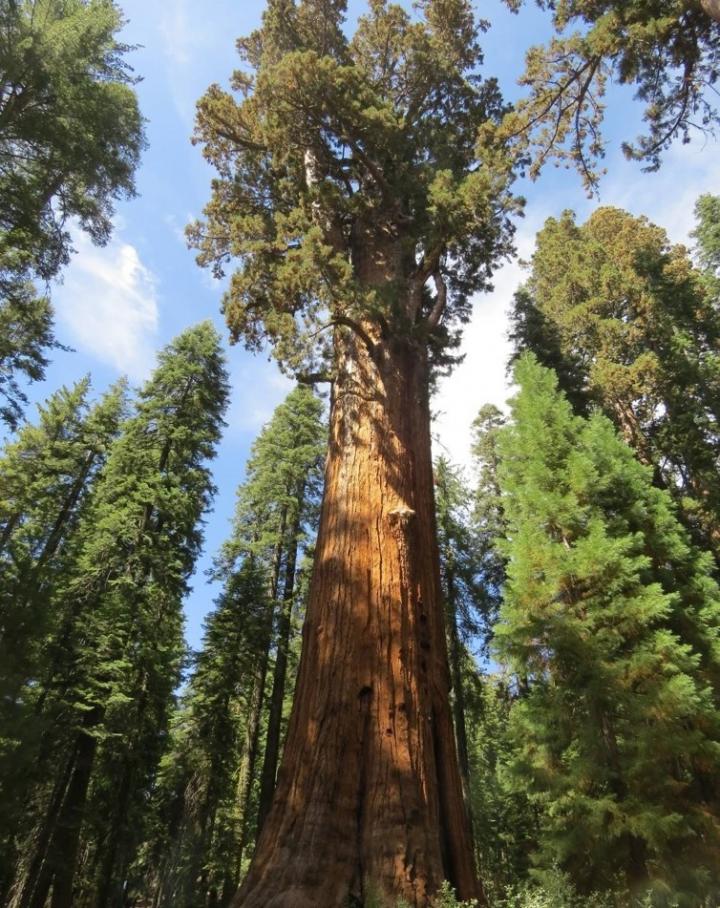
Credit: Photo: Plant Biomechanics Group Freiburg
The giant sequoia (Sequoiadendron giganteum) has developed effective strategies to protect itself against external influences in its natural environment in the Sierra Nevada. Its bark ensures that the tree survives wild fires and rock fall almost unscathed. Prof. Dr. Thomas Speck from the Cluster of Excellence Living, Adaptive and Energy-autonomous Materials Systems (livMatS), working with Dr. Georg Bold and Max Langer of the Institute of Biology, have examined the structural properties of its bark in detail for the first time. The University of Freiburg team has shown that the bark fibers form a three-dimensional network with cavities. This network distributes energy acting on the bark across the entire tissue. The results of their study have been published in the International Journal of Molecular Sciences.
The outer bark of the sequoia tree contains many fibers, which are organized in fiber bundles. These cross over each other and are also layered on top of each other, creating a three-dimensional netted structure. In between the fiber bundles are air-filled cavities. When a rock strikes the bark, these cavities are compressed. Compressing the hollow spaces and stretching the fiber network has the effect of distributing the energy evenly over the bark and protecting the inside of the tree with the sensitive cambium that forms wood and bark. The bark later returns almost completely to its original state. The cavities also insulate the tree so that it is resistant to the heat generated during wild fires.
Due to this structure, the bark of the sequoia tree behaves like an open-pored foam similar to the foam used in the construction of cars and houses, for example. On the basis of their findings, the researchers are, among others, to develop with colleagues from the University of Stuttgart a new type of light weight concrete with bundles of hollow fibers, which could be used to insulate and to better protect buildings against earthquakes, for example.
###
Contact:
Cluster of Excellence livMatS / Institute of Biology II
University of Freiburg
Media Contact
Thomas Speck
[email protected]




